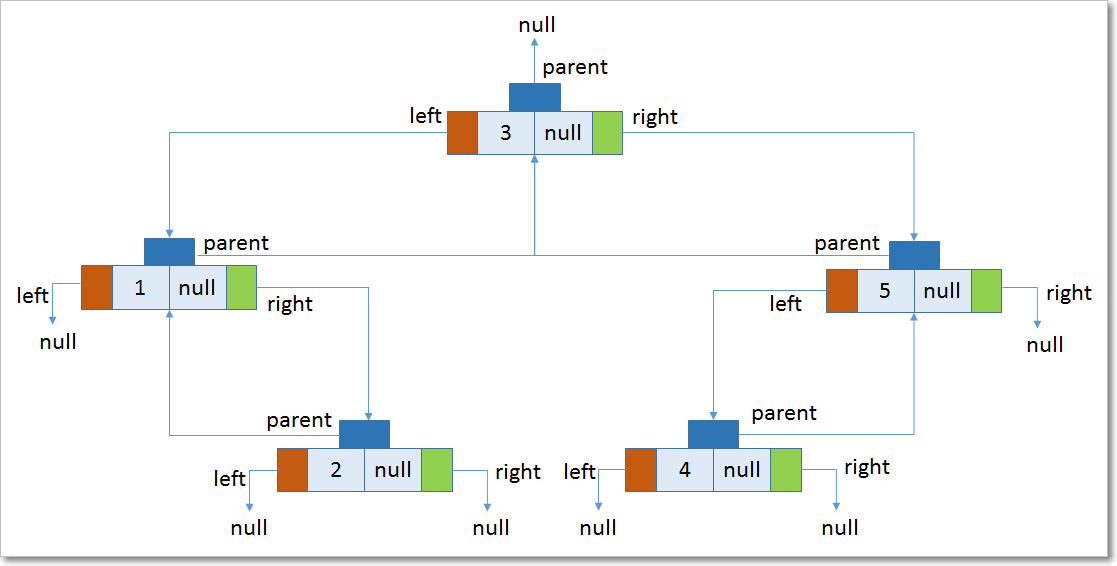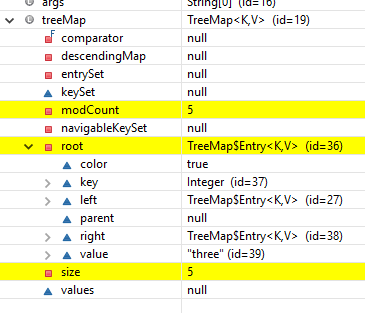TreeMap – Internal implementation
-
Underlying D.S is RED-BLACK TREE
-
Insertion order is NOT preserved & it is based on some sorting order of KEYS
-
Duplicate keys are NOT allowed, but values can be duplicated
-
If we are depending on default Natural Sorting Order, then KEYS should be Homogeneous & Comparable otherwise we will get Runtime exception saying ClassCastException
-
If we are defining our Own Sorting Order by comparator, then KEYS should need not be Homogeneous & Comparable. We can take Heterogeneous & non- comparable Objects also.
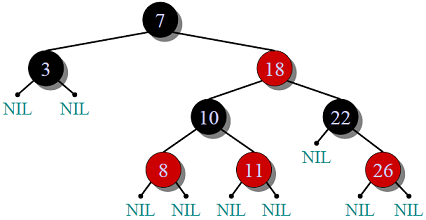
Red-Black Tree
-
Every node has a color either red or black.
-
Root of tree is always black.
-
No two adjacent red nodes (A red node cannot have a red parent or red child).
-
Every path from root to a NULL node has same number of black nodes.
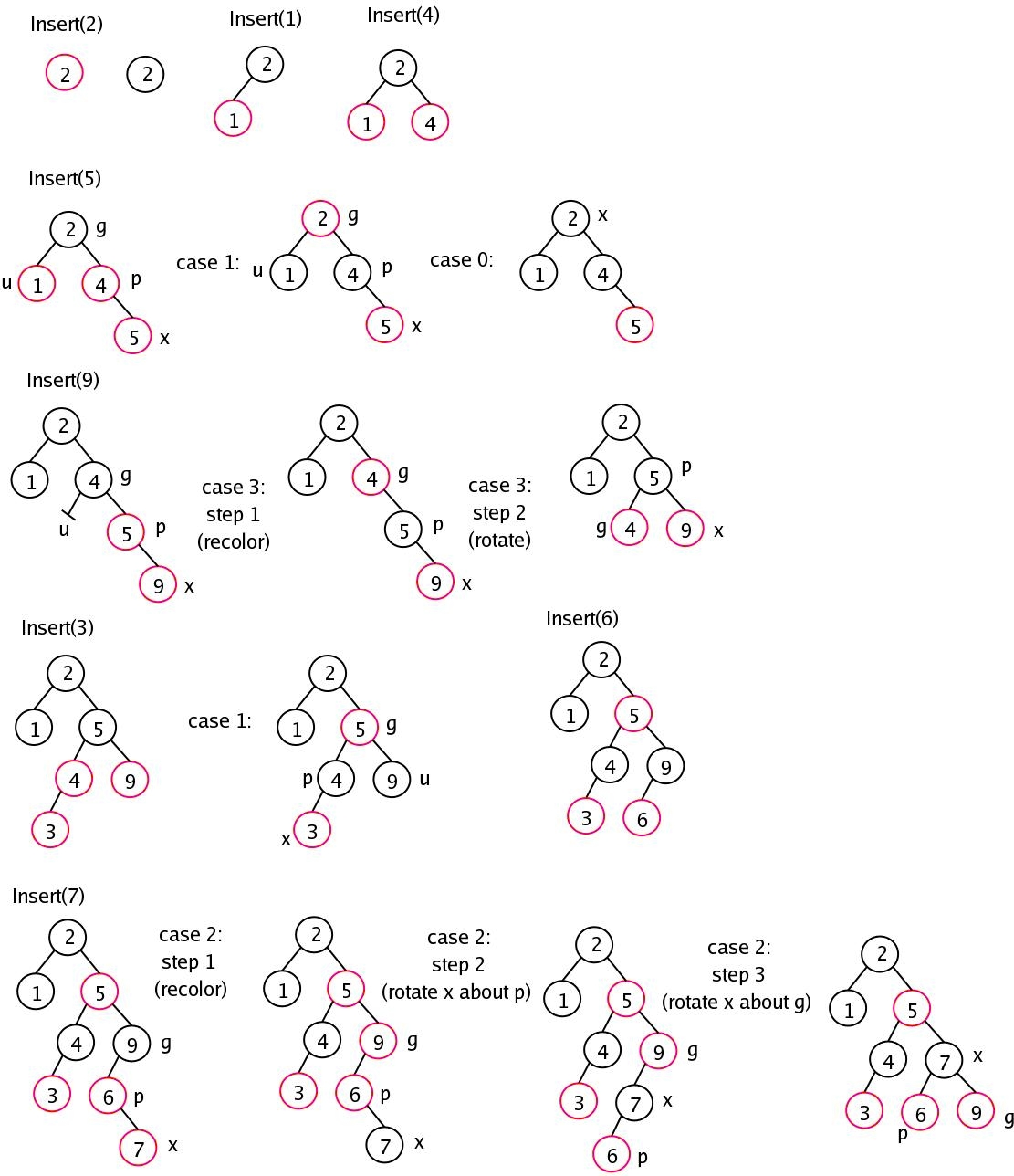
Constructors
-
TreeMap h = new TreeMap () //Default. Sorting OrderCreates an Empty TreeMap Object, all elements inserted in Default Natural Sorting Order -
TreeMap h = new TreeMap (Comparator c)//Customized. Sorting Order Creates an Empty TreeMap Object, all elements inserted in Customized Natural Sorting Order -
TreeMap h = new TreeMap (Map c) -
TreeMap h = new TreeMap (SortedMap s)
TreeMap Implementation
1.TreeMap is based on tree data structure. Each node in tree will have three references parent(key,value), right and left element.
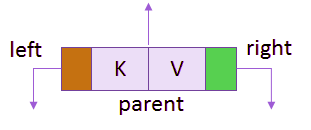
-
The left element will always be logically less than parent element.
-
The right element will always be logically greater than OR equal to parent element
static final class Entry<K,V> implements Map.Entry<K,V> { Entry<K,V> left; Entry<K,V> right; Entry<K,V> parent; K key; V value; }
2.Comparison of Objects is done by natural order i.e. those object who implement Comparable(default) interface and override compareTo(Object obj) method. Based on the return value,
-
If obj1.compareTo(obj2) , if obj<obj2 then returns negative number
-
If obj1.compareTo(obj2), if obj>obj2 then returns positive number
-
If obj1.compareTo(obj2) , if obj==obj2 then returns zero
3.When we use put(K,V) method it checks if root is pointing anywhere if no it makes the instance of Entry<K,V> and point to root;
4.The constructor of Entry<K,V> takes key, value and parent. In this case parent is null;
5.For the next time we enter using put(K,V) it first identifies the comparison mechanism to use.
6.First it checks the Comparator class is present or not. This class is passed when creating the instance of TreeMap. If not present it uses the Key’s Comparable implementation.
7.It then traverse through root and compares each node with the node entered and depending upon the comparison places the node either left or right of the parent node.
**treeMap.put(1, "one"); //1**
there are no elements in it. So 1 is the first object being inserted as key.
This is treated as root node
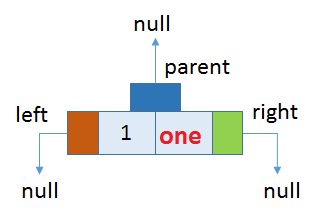
**treeMap.put(5, "five"); //2**
Now, 5 is logically greater than 1 and hence according to our rules,
-
5 will be placed to the right of 1.
-
1 will be parent of 5.
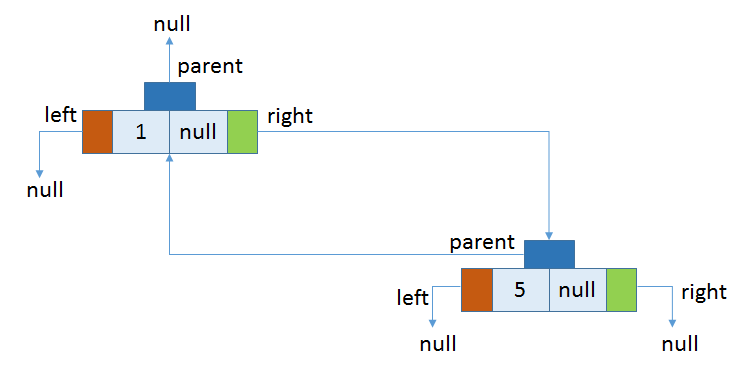
treeMap.put(3, "three"); //3
treeMap.put(2, "two"); //4
treeMap.put(4, "four"); //5, after inserting all these final structure will be
